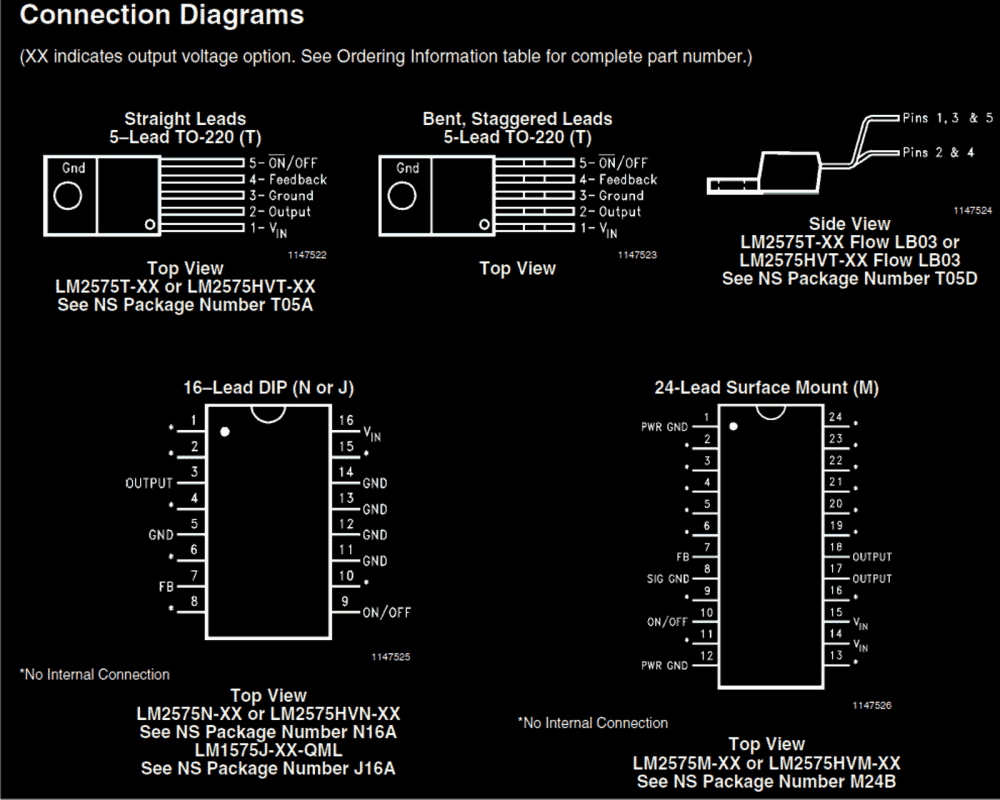You will be amazed with the features offered by this outstanding voltage regulator IC. As the name refers to, the output from this series of ICs is not only regulated and stabilized but is in the form of switched pulses at very high frequencies.
Enhanced Version of the Popular 78XX ICs
These ICs may be considered as an improved SMPS alternative for the conventional linear IC 78XX series regulators which tend to become hot with rising currents at their outputs, but not a problem with the series LM2575 from TEXAS INSTRUMENTS.
The switched output with the LM2575 series of ICs especially enables to implement very efficient power transfer to the load even at currents as high 1 Amp.
The switched output saves power, keeps the IC cool so that no heatsinks are involved, moreover the switched output makes the IC particularly suitable for a wide application range like in LED drivers, battery chargers etc.
These will be discussed elaborately in my coming articles.
The LM2575 series from TEXAS INSTRUMENTS provides all the features which particularly becomes very ideal for buck step down regulator applications.
These devices are typically capable of producing fixed regulated outputs of 3.3V, 5V, 12V, 15V, and also an adjustable output from one of the devices.
The configuration around these ICs require very few number of components for enabling it to function as an effective voltage regulator circuit.
The IC necessarily employs an inductor, as we all know that an inductor specifically becomes imperative for all buck/boost type of applications, so even this chip requires one.
Though this inductor my be readily procured from the market, may also be hand made using appropriate sized wire and number of calculated turns.
Main Technical Specs
The main features of the IC LM2575 may be summarized as follows:
Output - 3.3V, 5V, 12V, 15V and also an adjustable version configurable.
The adjustable version is able to provide outputs in the range of 1.2V to 35V, 57 volts being the highest.
Current - A assured 1 amp of current may be expected from these chips.
Input Voltage - A broad DC range upto 40 or even 60 V may be used as inputs for these ICs.
Operating Frequency - The ICs output fluctuates at a fixed frequency of 52 kHz, which is set internally.
Protections - The chips are all internally safeguarded from over heating and over current.
Courtesy of Texas Instruments: ti.com/lit/ds/symlink/lm2575-n.pdf

But current required is 9A which diode can be used?
I that case you can try the following concept:
https://www.homemade-circuits.com/wp-content/uploads/2012/08/simplestDCcellphonechargercircuit.png
Replace the zener with an adjusted 14V zener diode.
Also replace the transistor with a TIP142
Hello sir,
How to drop 15 v dc to 13.5v dc?
Hi Nitin,
put 2 or 3 rectifier diodes in series with the positive line